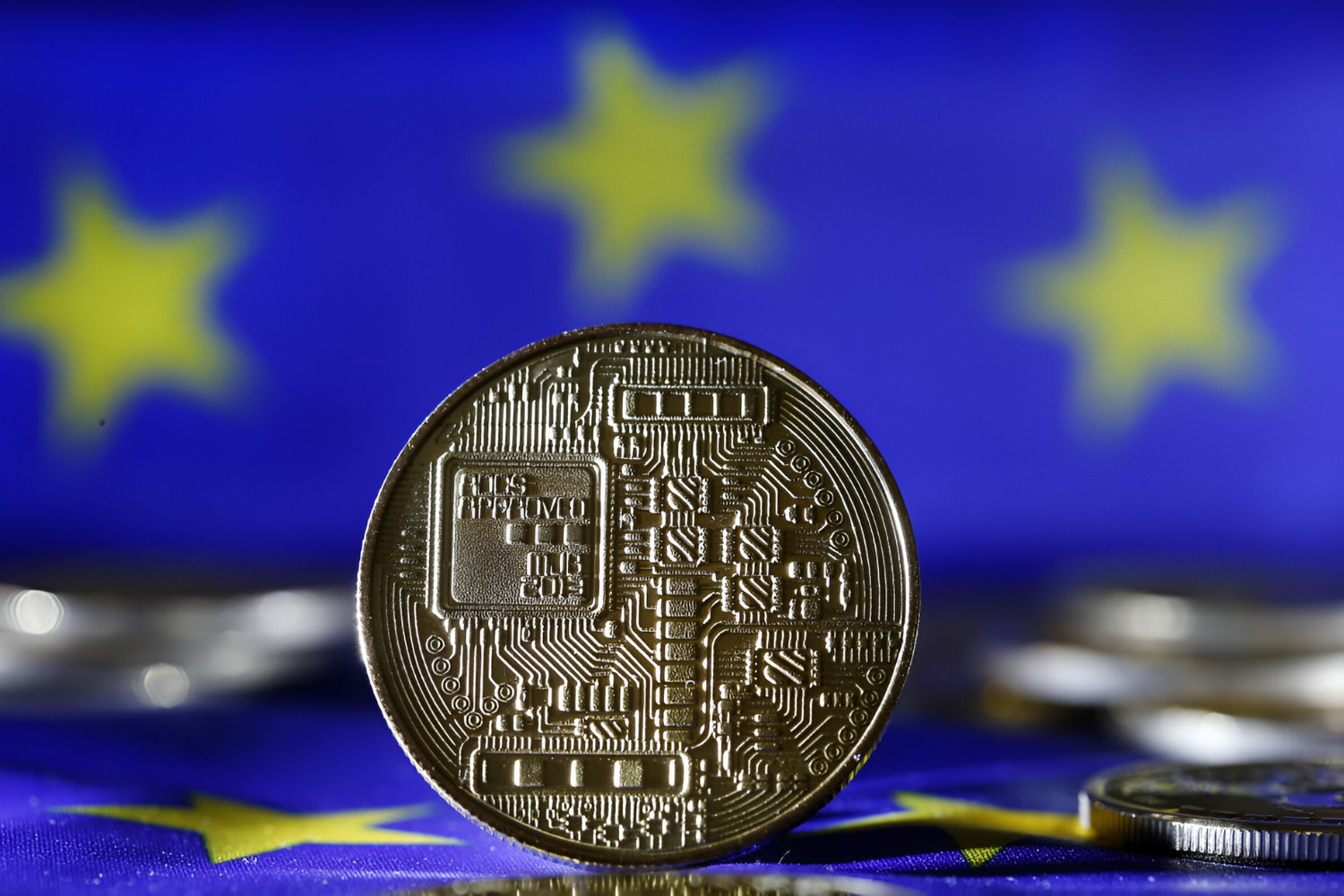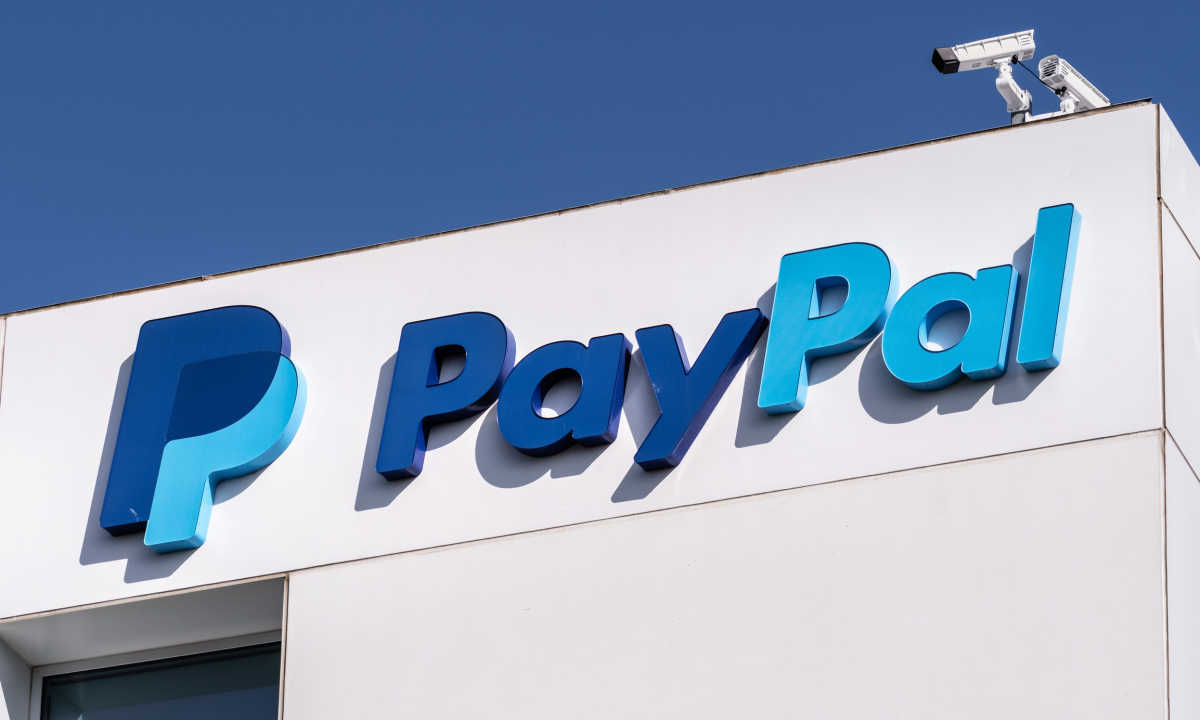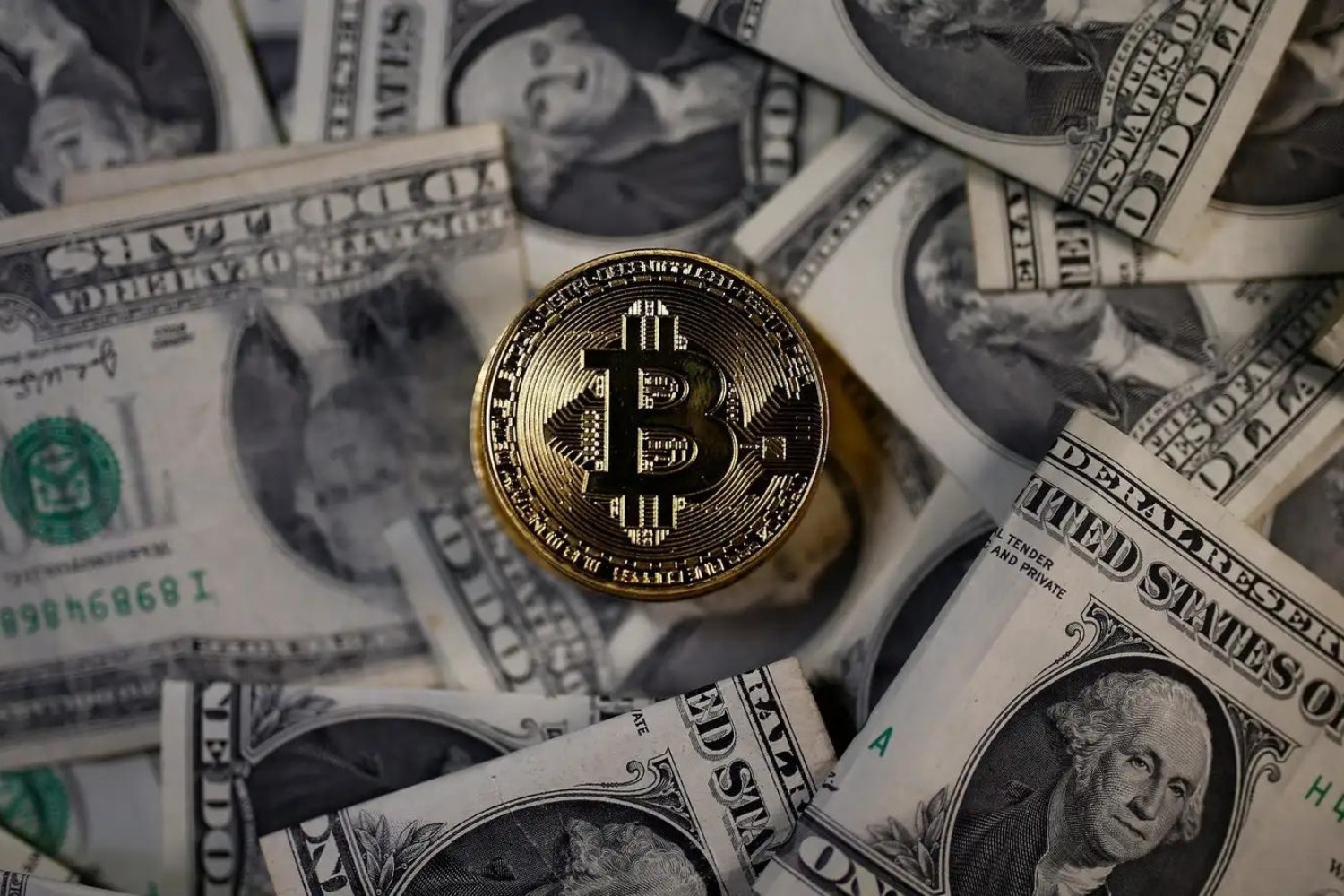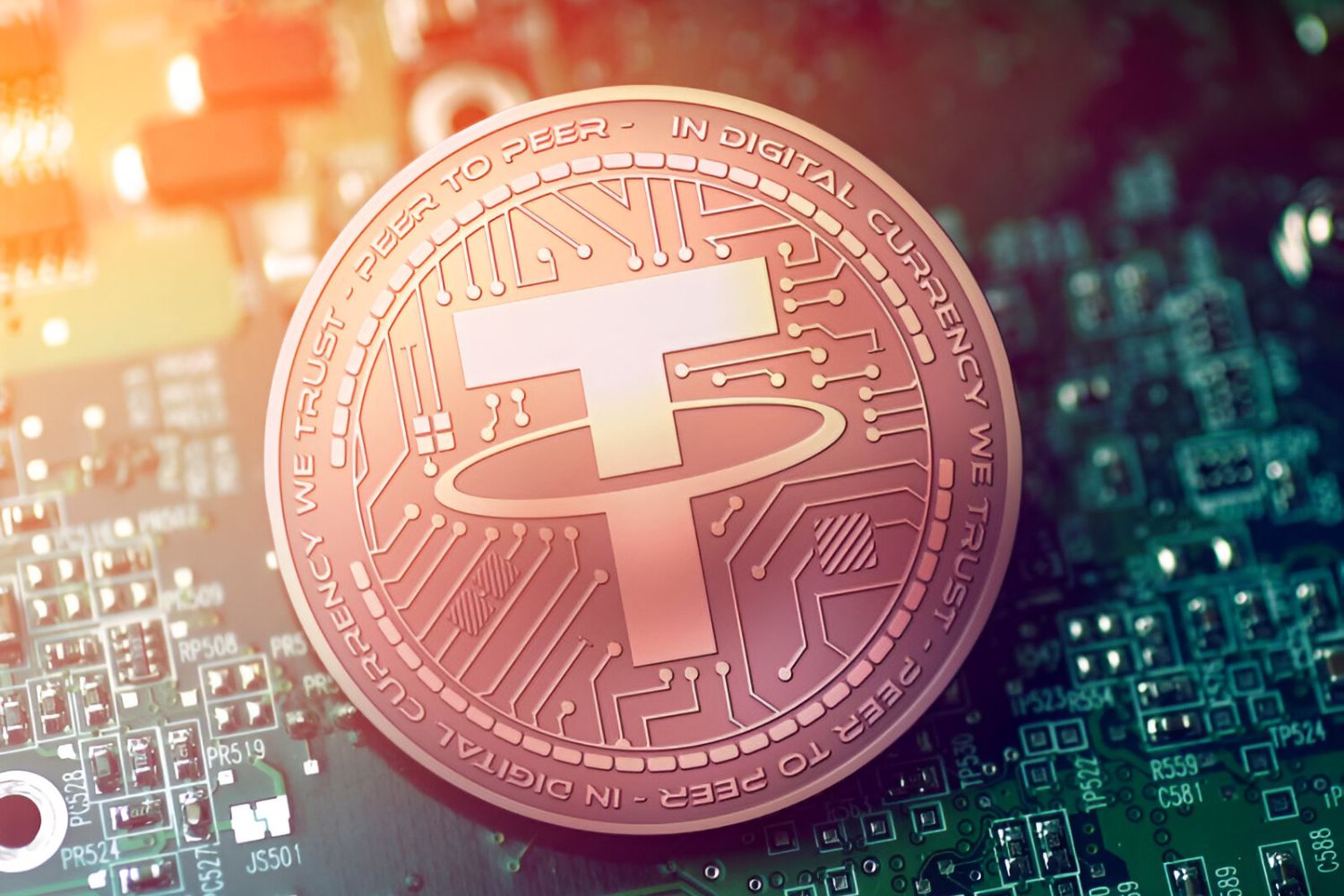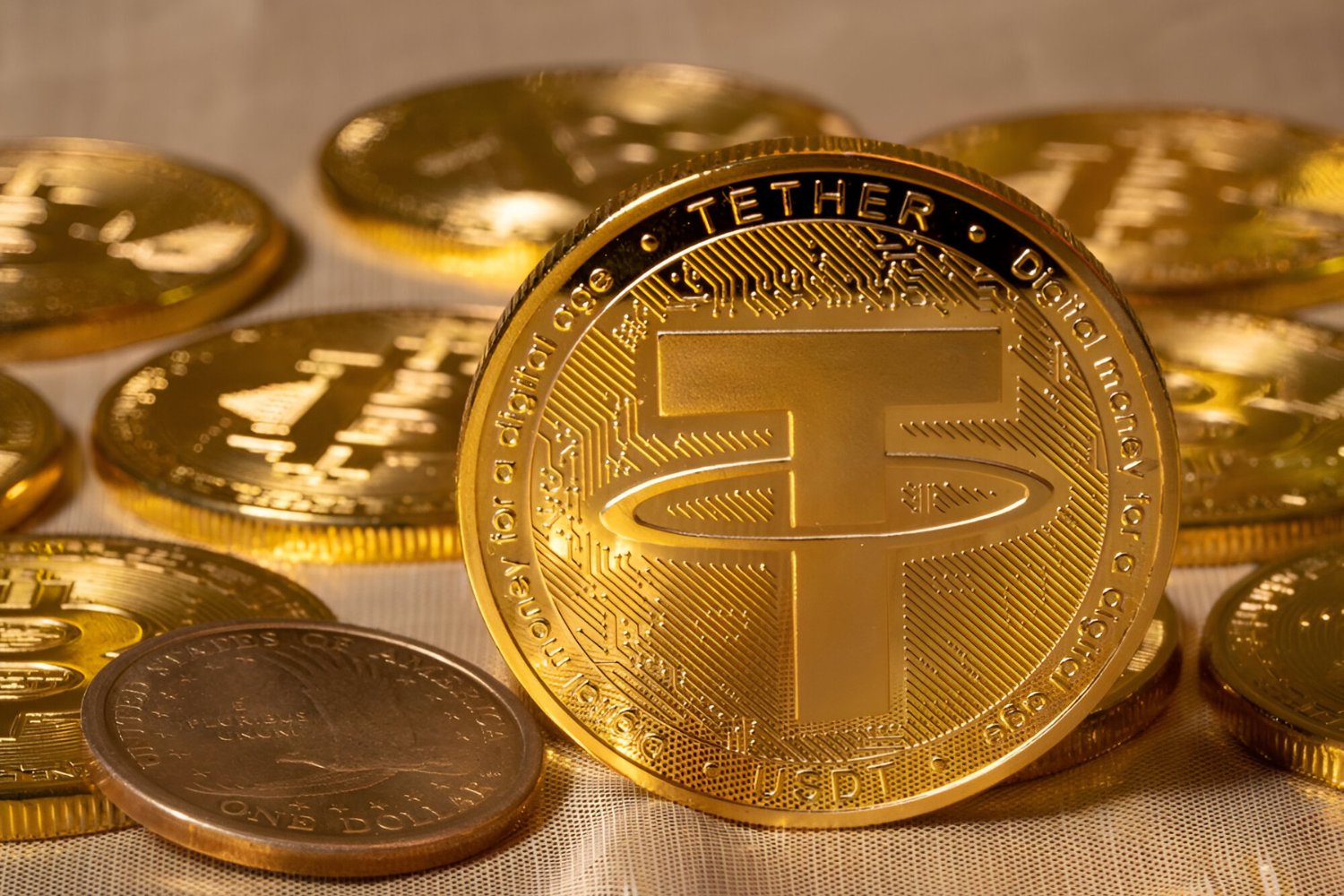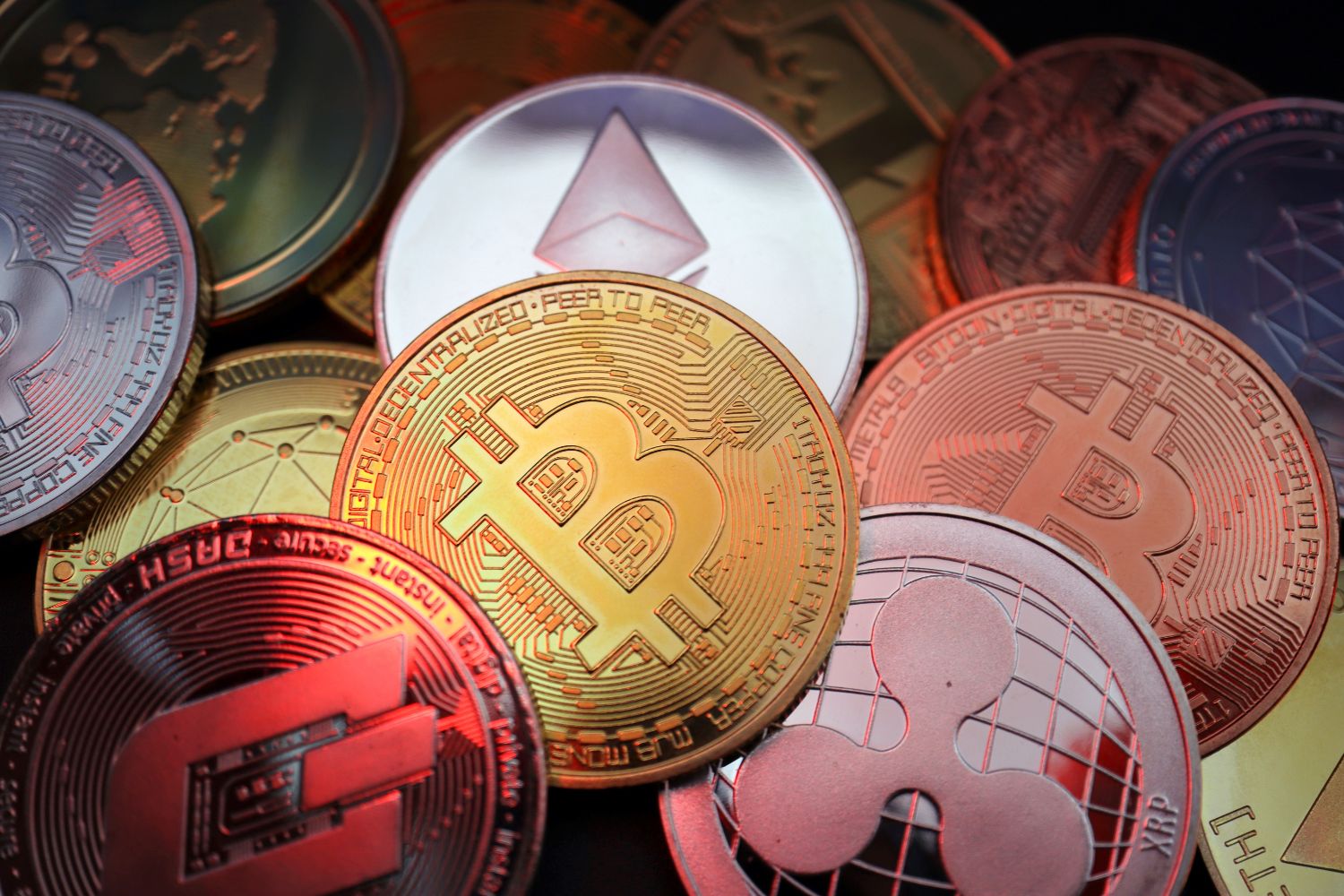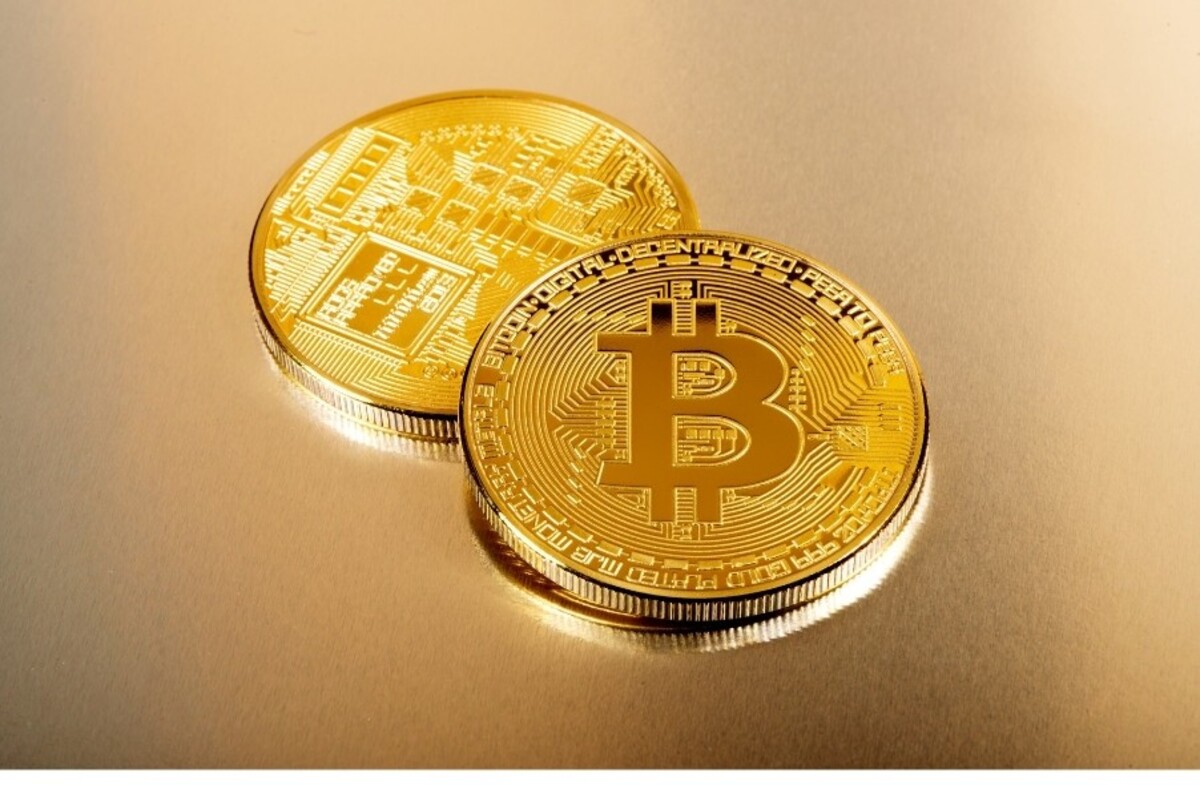Introduction
The world of cryptocurrencies has seen rapid growth and innovation in recent years, with new digital assets emerging to address various needs and challenges. One such groundbreaking development is the concept of stablecoins. As the name suggests, stablecoins aim to provide stability in an otherwise volatile and unpredictable market.
In the cryptocurrency space, volatility is a common characteristic, with prices fluctuating wildly within short periods. While this volatility may attract some investors looking for quick gains, it also presents significant risks and obstacles for mainstream adoption and everyday use. This is where stablecoins come into play.
Stablecoins are a special type of cryptocurrency designed to maintain a stable value, usually pegged to a specific asset or currency. By offering price stability, stablecoins aim to overcome the volatility concerns that have hindered the widespread adoption of digital currencies in day-to-day transactions and mainstream financial activities.
The market for stablecoins has witnessed the emergence of various projects, each implementing different mechanisms and pegging strategies to achieve stability. One such stablecoin that has gained attention is EuroC.
In this article, we will explore EuroC, its unique characteristics, how it achieves stability, and its advantages and potential use cases. We will also delve into the process of purchasing EuroC stablecoin and discuss its regulatory compliance.
So, if you’re intrigued by the concept of stablecoins and want to learn more about EuroC and its potential impact on the cryptocurrency landscape, read on to discover the ins and outs of this exciting digital asset. Let’s dive in!
What is a stablecoin?
A stablecoin is a type of cryptocurrency that is designed to maintain a stable value in relation to a specific asset or currency. Unlike other cryptocurrencies such as Bitcoin or Ethereum, which have volatile price fluctuations, stablecoins seek to offer stability and reduce the inherent risks associated with price volatility.
Stablecoins achieve stability through various mechanisms, such as pegging their value to a fiat currency like the US Dollar, Euro, or Yen, or to a commodity like gold. By pegging the value, stablecoins aim to provide a consistent and reliable store of value, making them more suitable for everyday transactions and financial activities.
There are different types of stablecoins, classified based on their underlying pegging mechanisms. Some stablecoins are backed by reserves, meaning that for every stablecoin in circulation, there is an equivalent reserve of the underlying asset held by the issuing entity. This ensures that the stablecoin can be redeemed for the underlying asset at any time, thus maintaining its stability.
Other stablecoins rely on algorithmic mechanisms to achieve stability. These stablecoins use smart contracts and algorithms to manage the supply and demand of the cryptocurrency in order to maintain a stable price. The algorithms may adjust the supply of the stablecoin based on market conditions, ensuring that the price remains closely tied to the pegged asset.
The primary objective of stablecoins is to provide stability without compromising the advantages of cryptocurrencies, such as transparency, security, and ease of transfer. Stablecoins can be used as a medium of exchange for everyday transactions, store of value, and even a unit of account.
Stablecoins have gained significant attention and traction in recent years, as they bridge the gap between traditional financial systems and the decentralized world of cryptocurrencies. They offer a more stable alternative to volatile cryptocurrencies, making them a viable option for those seeking stability in the dynamic cryptocurrency market.
In the next section, we will explore why stability is crucial in the cryptocurrency space and the challenges it addresses. We will also discuss some of the popular stablecoins currently available in the market. So, stay tuned to learn more about stablecoins and their significance in the crypto ecosystem!
Why is stability important in the cryptocurrency space?
Stability plays a crucial role in the cryptocurrency space for several reasons. The inherent volatility of many cryptocurrencies has become a significant barrier to their widespread adoption and use in everyday transactions. Let’s explore why stability is important in the cryptocurrency space:
1. Facilitating Everyday Transactions: Cryptocurrencies with stable values are more appealing for day-to-day transactions. Imagine buying a cup of coffee with a cryptocurrency that could fluctuate significantly in value within minutes. The price instability makes it challenging to determine the actual cost and creates uncertainty for both buyers and sellers. Stablecoins address this issue by offering a reliable and consistent value, making them suitable for everyday transactions.
2. Store of Value: Stability is a crucial characteristic of any store of value. People want to be able to save their money without the fear of losing its purchasing power due to extreme fluctuations. Stablecoins provide stability and act as a digital store of value, allowing individuals to hold and transfer funds with confidence.
3. Risk Management: Stability in the cryptocurrency market is crucial for risk management. Price volatility can lead to substantial losses for investors and traders. Stablecoins provide a less risky alternative for those who want to avoid the extreme price swings and uncertain market conditions. They offer a predictable value, enabling users to manage their risks effectively.
4. Cross-Border Transactions: The global nature of cryptocurrencies makes them ideal for cross-border transactions. However, the current financial system often introduces delays, high transaction fees, and potential currency exchange risks. Stablecoins provide a stable value that can simplify cross-border transactions and reduce the complexity and costs associated with traditional banking systems.
5. Mainstream Adoption: Stability is a key factor in attracting mainstream users and businesses to adopt cryptocurrencies. Volatility raises concerns about using cryptocurrencies for salaries, payments, or business transactions. By offering stability, stablecoins provide a more secure and predictable option for businesses and individuals looking to integrate cryptocurrencies into their daily operations.
Overall, stability in the cryptocurrency space is vital for building trust, encouraging adoption, and facilitating efficient transactions. Stablecoins offer a solution to the price volatility challenges faced by traditional cryptocurrencies, making them a promising tool for the broader adoption of digital currencies.
In the next section, we will provide an overview of different stablecoins in the market and discuss their unique characteristics and approaches to achieving stability. So, continue reading to explore the diverse landscape of stablecoins!
Overview of different stablecoins in the market
The market for stablecoins has seen significant growth, with numerous projects aiming to provide stability in the volatile cryptocurrency space. Let’s take a closer look at some of the popular stablecoins available in the market today:
1. Tether (USDT): Tether is one of the most well-known stablecoins in the market. It is pegged to the US Dollar on a 1:1 basis, meaning each USDT represents one US Dollar. Tether claims to maintain its value by having equivalent US Dollar reserves in its bank accounts. Tether has gained popularity due to its widespread acceptance and use in cryptocurrency exchanges.
2. USD Coin (USDC): Launched by Coinbase and Circle, USD Coin is also pegged to the US Dollar. It operates on an open-source blockchain platform, allowing for greater transparency. USDC undergoes monthly audits to ensure its value is fully backed by US Dollars held in reserve accounts.
3. Dai (DAI): Dai is a stablecoin created by the MakerDAO project. It is an algorithmic stablecoin that achieves stability through over-collateralization of Ethereum-based assets. The value of Dai is maintained close to one US Dollar through automatic adjustments of the collateralized assets based on market conditions.
4. Binance USD (BUSD): Binance USD is a stablecoin launched by Binance, one of the leading cryptocurrency exchanges. It is pegged to the US Dollar and collateralized by a mix of cash and other stablecoins. Binance USD offers users the ability to transact at a stable value within the Binance ecosystem.
5. TrueUSD (TUSD): TrueUSD is another US Dollar-backed stablecoin that aims to provide price stability. Similar to other stablecoins, TrueUSD is backed by an equivalent reserve of US Dollars held in escrow accounts and undergoes regular audits to ensure transparency and trust.
6. Paxos Standard (PAX): Paxos Standard is an Ethereum-based stablecoin that is pegged to the US Dollar. It is regulated by the New York State Department of Financial Services and is backed by equivalent US Dollars held in reserve accounts.
These are just a few examples of stablecoins that have gained traction in the market. Each stablecoin has its own approach and mechanism to achieve stability, offering users a choice based on their particular requirements.
It is important to note that while stablecoins aim to provide stability, they may still carry certain risks. Users should conduct thorough research and due diligence before engaging with any stablecoin and consider factors such as the pegging mechanism, audits, regulatory compliance, and the reputation of the issuing entity.
In the next section, we will introduce EuroC stablecoin, its unique features, and the mechanism it uses to achieve stability. So, keep reading to discover the specifics of EuroC and its potential in the cryptocurrency market!
What is EuroC stablecoin?
EuroC is a stablecoin that is pegged to the Euro, the official currency of the European Union. It is designed to offer stability in the dynamic cryptocurrency market while allowing users to engage in seamless transactions and take advantage of the benefits of blockchain technology.
As a Euro-pegged stablecoin, EuroC aims to maintain a value that is equivalent to one Euro. This enables users to transact and hold funds with stability, without the worry of price volatility that is commonly associated with other cryptocurrencies.
EuroC is built on blockchain technology, utilizing smart contracts to ensure transparency, security, and efficient transactions. By leveraging the advantages of decentralization and immutability, EuroC provides a reliable and trustworthy digital asset for users in the cryptocurrency ecosystem.
Unlike traditional banking systems that may introduce delays and high fees for cross-border transactions, EuroC offers a more efficient and cost-effective solution. With EuroC, users can transfer funds globally without being subject to currency exchange risks and lengthy processing times.
The stable value of EuroC makes it an attractive option for individuals and businesses seeking to integrate cryptocurrencies into their daily financial activities. It provides stability for those looking to hold their assets or make regular payments, without the concern of value fluctuations.
Furthermore, EuroC offers potential benefits to the wider economy. By facilitating cross-border transactions with minimal friction, EuroC has the potential to streamline international trade and increase economic efficiency. It can also act as a bridge between traditional financial systems and the emerging world of cryptocurrencies, fostering greater adoption and acceptance.
It is important to note that EuroC is just one of the many stablecoins available in the market, each with its own unique features and value propositions. As with any financial instrument, users should exercise caution and conduct thorough research before engaging with EuroC or any other stablecoin.
In the next section, we will explore the mechanism that EuroC utilizes to achieve stability and the advantages it offers to users. So, continue reading to discover the inner workings of EuroC stablecoin and its potential use cases!
How does EuroC achieve stability?
EuroC achieves stability by employing a combination of reserve backing and algorithmic mechanisms. Let’s explore how EuroC maintains its peg to the Euro and ensures a stable value:
1. Reserve Backing: EuroC is backed by a reserve of Euros held by the issuing entity. For every EuroC in circulation, there is an equivalent amount of Euros held in reserve. This reserve backing ensures that EuroC can be redeemed at any time for its underlying value, thus maintaining its stability. The transparency and integrity of the reserve are crucial in building trust and confidence among users.
2. Algorithmic Adjustments: In addition to the reserve backing, EuroC also utilizes algorithmic mechanisms to manage its supply and demand in the market and maintain stability. The algorithm adjusts the supply of EuroC based on market conditions. If the demand for EuroC exceeds the available supply, the algorithm may increase the supply to meet the demand and stabilize the price. Conversely, if there is an excess supply of EuroC, the algorithm may decrease the supply to maintain the pegged value.
The algorithmic adjustments are crucial in ensuring that EuroC can quickly respond to market dynamics and maintain a stable value. The algorithm takes into account various factors such as market demand, trading volume, and external market conditions to make informed decisions regarding the supply of EuroC.
It is important to note that while EuroC aims to achieve stability, there can still be external factors that may impact its value. Economic events, regulatory changes, or market sentiments can influence the stability of EuroC, as with any other financial instrument.
The combination of reserve backing and algorithmic adjustments provides a strong foundation for EuroC to achieve stability in the cryptocurrency market. These mechanisms are designed to mitigate volatility and ensure that EuroC remains pegged to the Euro, offering users a reliable and predictable digital asset for their financial activities.
In the next section, we will discuss the advantages and potential use cases of EuroC stablecoin. From everyday transactions to international remittances, EuroC offers a range of practical applications in the cryptocurrency ecosystem. So, keep reading to uncover the possibilities with EuroC!
Advantages and Use Cases of EuroC Stablecoin
EuroC stablecoin offers several advantages and potential use cases, making it a valuable asset in the cryptocurrency ecosystem. Let’s explore some of the key advantages and applications of EuroC:
1. Stability: The primary advantage of EuroC is its stability. By being pegged to the Euro, EuroC offers a reliable and consistent value, reducing the risks associated with price volatility. This stability makes it an ideal medium for everyday transactions, allowing users to transact in a digital currency without worrying about sudden value fluctuations.
2. Cross-Border Transactions: EuroC opens up new possibilities for cross-border transactions. Traditional methods of transferring money across borders are often slow, expensive, and subject to foreign exchange risks. EuroC, on the other hand, enables seamless and cost-effective international transfers, bypassing the limitations of the traditional banking system. Businesses and individuals can use EuroC to send or receive funds globally, facilitating international trade and remittances.
3. Decentralization and Transparency: EuroC leverages the benefits of blockchain technology, such as decentralization and transparency. Transactions made with EuroC are recorded on the blockchain, ensuring transparency and immutability. This provides users with a high level of trust and eliminates the need for intermediaries in the transaction process.
4. Lower Fees and Faster Transactions: EuroC transactions typically have lower fees compared to traditional banking systems, especially for cross-border transfers. The elimination of intermediaries and the efficiency of blockchain technology make EuroC transactions faster and more cost-effective.
5. Financial Inclusion: EuroC has the potential to promote financial inclusion, particularly in areas where access to traditional banking services is limited. EuroC allows people to transact, save, and hold value in a stable digital currency, providing them with opportunities to participate in the global economy.
6. Hedging and Stability for Crypto Investors: EuroC can offer stability to cryptocurrency investors by providing a way to hedge against the volatility of other cryptocurrencies. By holding EuroC, investors can mitigate the risks associated with price fluctuations and preserve the value of their portfolio during times of market volatility.
These are just a few examples of the advantages and use cases of EuroC stablecoin. As the market and adoption of stablecoins continue to grow, EuroC has the potential to become a prominent player in facilitating financial transactions and providing stability in the cryptocurrency space.
In the next section, we will explore the process of purchasing EuroC stablecoin and discuss its regulatory compliance. Understanding how to acquire and use EuroC is essential for users interested in leveraging its benefits. So, keep reading to discover how to get started with EuroC!
How to Purchase EuroC Stablecoin
If you’re interested in purchasing EuroC stablecoin, there are several steps you can follow to acquire this digital asset. Here’s a guide on how to purchase EuroC:
1. Choose a Platform or Exchange: The first step is to find a reputable cryptocurrency exchange or platform that supports EuroC. Look for exchanges with a good reputation, high liquidity, and secure trading infrastructure. Ensure that the exchange allows you to trade EuroC against other cryptocurrencies or fiat currencies.
2. Create an Account: Once you have selected an exchange, you will need to create an account. This typically involves providing your personal information, verifying your identity, and setting up a secure password. Complete all the necessary steps to register and authenticate your account.
3. Deposit Funds: After setting up your account, you will need to deposit funds into the exchange to have the necessary balance for purchasing EuroC. Some exchanges support deposits in cryptocurrencies like Bitcoin or Ethereum, while others may allow deposits in fiat currencies. Follow the specific instructions provided by the exchange to deposit the funds.
4. Find the EuroC Market: Once your account is funded, navigate to the market where EuroC is traded. Look for the EuroC trading pair, such as EuroC/Bitcoin or EuroC/Ethereum, depending on the available options on the exchange. This will allow you to buy EuroC using your deposited funds.
5. Place an Order: On the market page, you can place an order to buy EuroC. You can choose between market orders, which will execute immediately at the current market price, or limit orders, where you set the price at which you want to buy EuroC. Carefully review the order details, including quantity and price, before confirming the purchase.
6. Securely Store Your EuroC: After the purchase is complete, it is essential to store your EuroC securely. Some exchanges offer built-in wallets where you can store your EuroC, but it is generally recommended to transfer the funds to a separate wallet that you control. You can use a hardware wallet or a software wallet that supports EuroC.
It is crucial to research and choose a reputable exchange, follow best security practices, and be cautious when entering into transactions. Always double-check the wallet addresses and ensure that you are using official channels to purchase EuroC.
Remember that the availability and process for purchasing EuroC may vary depending on the exchange or platform you use. It is important to familiarize yourself with the specific instructions and guidelines provided by the exchange you choose.
In the next section, we will discuss the regulatory compliance and oversight of EuroC stablecoin. Understanding the regulatory framework surrounding EuroC is essential for users seeking a compliant and trustworthy digital asset. So, continue reading to explore the regulatory landscape of EuroC!
Regulation and Compliance of EuroC Stablecoin
As a stablecoin pegged to the Euro, EuroC operates within the regulatory framework of the European Union and the specific jurisdiction it operates in. Let’s explore the regulatory landscape and compliance considerations surrounding EuroC:
1. European Union Regulations: EuroC operates under the regulations set forth by the European Union (EU). The EU has been proactive in addressing the regulatory challenges posed by cryptocurrencies and has implemented frameworks to ensure consumer protection, anti-money laundering (AML) compliance, and financial stability. EuroC must adhere to these regulations to operate in compliance with the EU’s legal requirements.
2. AML and KYC Compliance: EuroC, like other reputable stablecoins, is likely to adhere to strict Anti-Money Laundering (AML) and Know Your Customer (KYC) regulations. This means that users who wish to purchase EuroC may have to undergo a verification process to confirm their identity, preventing illicit activities such as money laundering or terrorist financing.
3. Licensing and Supervision: Depending on the jurisdiction, EuroC may need to obtain specific licenses and approvals to operate as a stablecoin. It is essential for EuroC to comply with the regulatory requirements and undergo regulatory oversight to ensure transparency and build trust among users.
4. Auditing and Reporting: Regular audits and reporting are crucial in the stablecoin industry to demonstrate transparency and accountability. EuroC should undergo audits by reputable accounting firms to verify the reserve backing and ensure the stability of the stablecoin. These audits provide assurance to users that EuroC is operating in compliance with regulatory requirements.
5. Data Protection and Privacy: EuroC must also comply with data protection and privacy regulations, such as the General Data Protection Regulation (GDPR) in the European Union. It must handle users’ personal information securely and respect their privacy rights.
It is important for users to understand that the regulatory landscape surrounding stablecoins, including EuroC, is evolving and subject to change. Compliance requirements may differ based on the jurisdiction and the specific circumstances of the stablecoin. Keeping updated with regulatory developments and being aware of the legal framework is crucial when engaging with stablecoins.
Before purchasing EuroC, users should conduct due diligence on the stablecoin issuer, ensuring they are reputable, transparent, and comply with the necessary regulations. It is also advisable to consult legal and financial professionals for guidance specific to their jurisdiction.
In the next section, we will conclude our exploration of EuroC stablecoin, summarizing the key points discussed and the potential future outlook for EuroC in the cryptocurrency market. So, keep reading to wrap up your knowledge on EuroC!
Conclusion
In conclusion, EuroC stablecoin offers stability and reliability in the dynamic landscape of cryptocurrencies. By being pegged to the Euro and employing a combination of reserve backing and algorithmic adjustments, EuroC maintains a stable value, making it suitable for everyday transactions and financial activities.
Stablecoins, including EuroC, play a vital role in addressing the challenges of price volatility that hinder the widespread adoption of cryptocurrencies for mainstream use. EuroC provides stability, transparency, and efficiency, making it an attractive digital asset for individuals, businesses, and even governments.
The advantages and use cases of EuroC are numerous. It enables seamless cross-border transactions, lowers fees, and provides a hedge against the volatility of other cryptocurrencies. EuroC also promotes financial inclusion by offering a reliable and convenient digital currency option to those without access to traditional banking systems.
However, it is crucial to note that EuroC operates within the regulatory framework of the European Union and respective jurisdictions. Compliance with regulations, such as AML and KYC requirements, auditing, licensing, and data protection, is essential to ensure legality, transparency, and user trust.
As with any investment or financial decision, it is important for individuals to exercise caution and conduct thorough research before engaging with EuroC or any other stablecoin. Understanding the risks, regulatory compliance, and the reputation of the stablecoin issuer is paramount.
Looking to the future, EuroC has the potential to play a significant role in bridging the gap between traditional financial systems and the emerging world of cryptocurrencies. Its stability, efficiency, and potential impact on cross-border transactions make it a promising asset for the wider adoption of cryptocurrencies and the digital economy.
Whether you are a cryptocurrency enthusiast, an investor, a business owner, or someone seeking a stable digital asset, EuroC stablecoin offers a practical and secure solution for your financial needs.
We hope this article has provided you with a comprehensive understanding of EuroC stablecoin, its mechanism to achieve stability, advantages, use cases, regulatory compliance, and the potential it holds in the cryptocurrency market. Stay informed, stay secure, and embrace the possibilities that EuroC and stablecoins offer in the evolving digital landscape!







